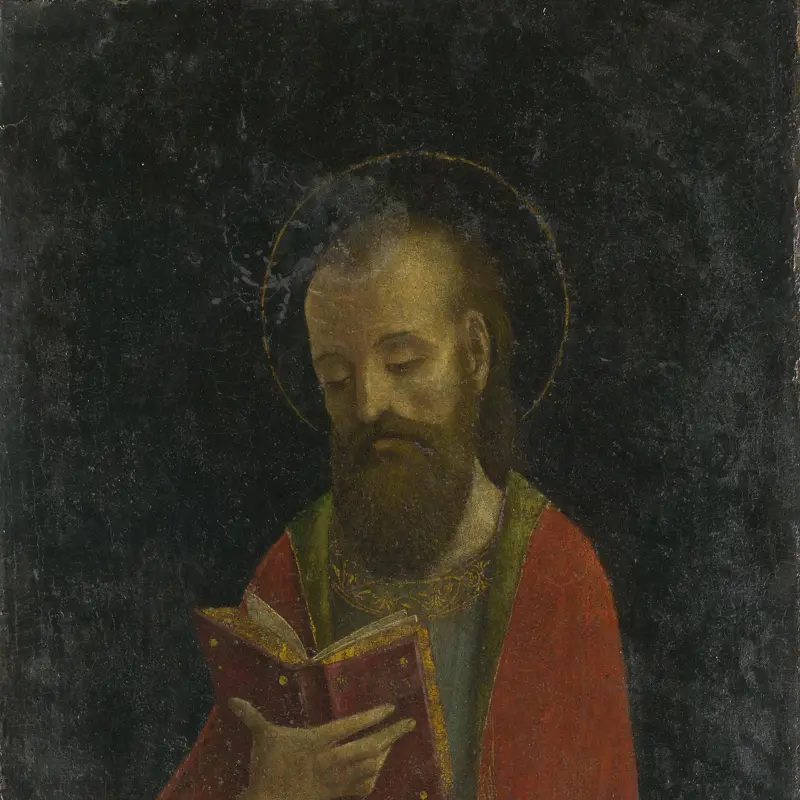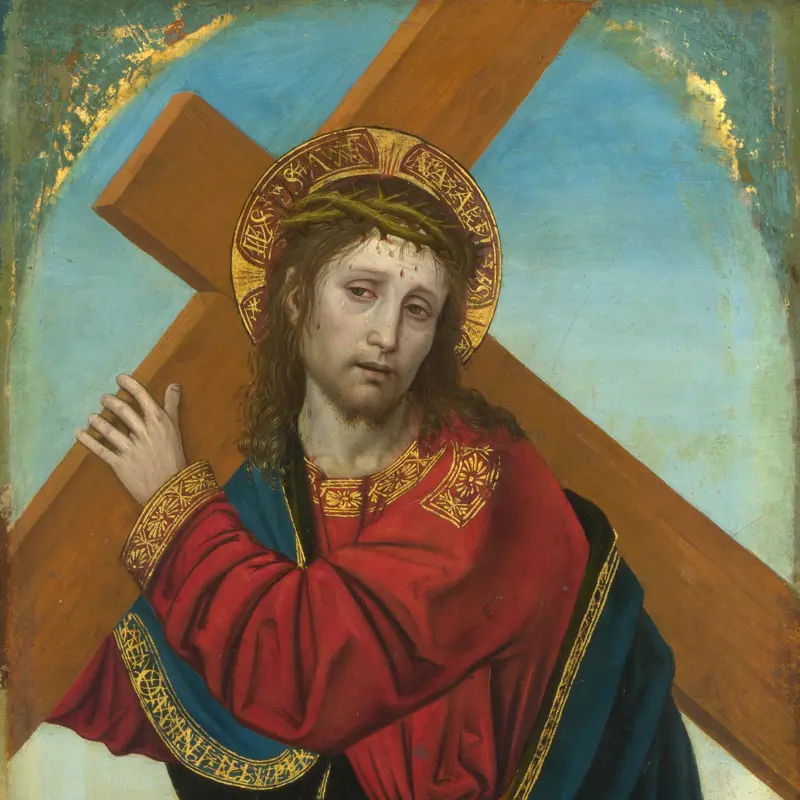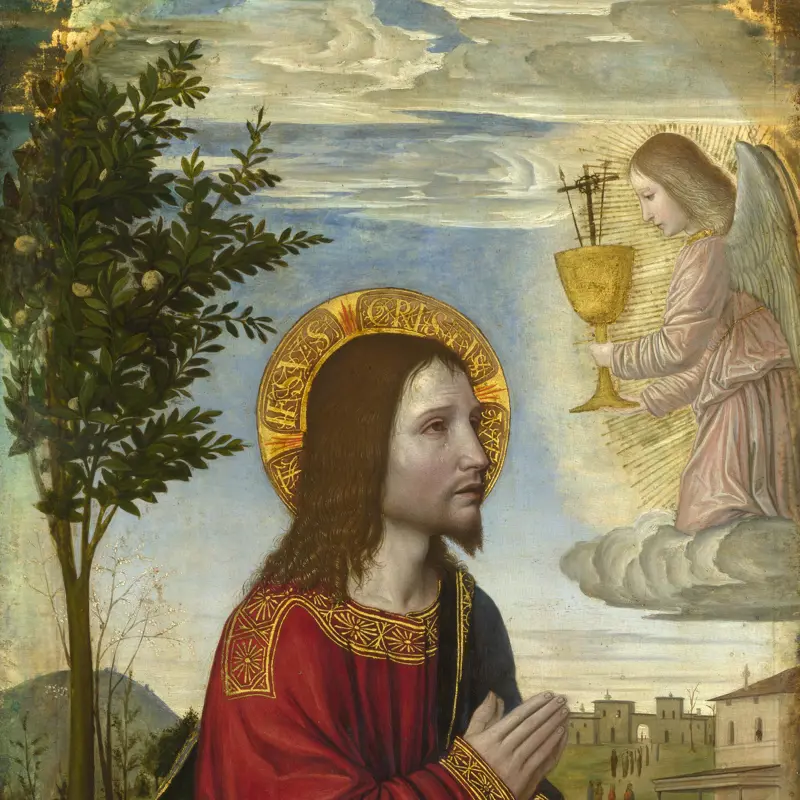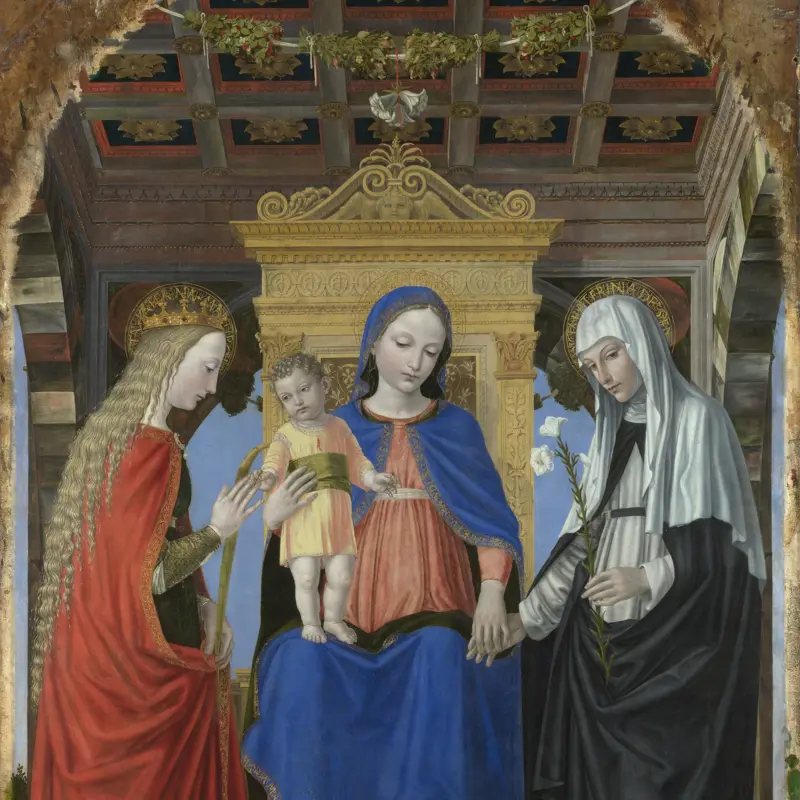Style of Ambrogio Bergognone, 'Saint Paul', late 15th century
About the work
Overview
A bearded saint stands reading a book, his left hand resting on a sword, in this quietly contemplative picture. We know, from his dark hair and beard and from the objects he holds, that this is Saint Paul: the sword is the weapon with which he was martyred and the book represents his many writings.
This small panel is one of two in our collection which probably came from the top level of a polyptych (a multi-panelled altarpiece). They were painted in the later years of the fifteenth century by a follower of the great Lombard artists Vincenzo Foppa and Ambrogio Bergognone.
Saint Paul was largely responsible for establishing the Christian Church in the decades after Christ’s death. He initially persecuted Christians, but was dramatically converted to the new faith on the road to Ephesus. He wrote a considerable (though debated) number of the books of the New Testament – hence the book he holds here.
Key facts
Details
- Full title
- Saint Paul
- Artist
- Style of Ambrogio Bergognone
- Artist dates
- active 1481; died 1523?
- Part of the series
- Two Panels from an Altarpiece
- Date made
- late 15th century
- Medium and support
- oil on wood
- Dimensions
- 110.5 × 41.9 cm
- Acquisition credit
- Layard Bequest, 1916
- Inventory number
- NG3080
- Location
- Not on display
- Collection
- Main Collection
- Previous owners
Provenance
Additional information
Text extracted from the ‘Provenance’ section of the catalogue entry in Martin Davies, ‘National Gallery Catalogues: The Earlier Italian Schools’, London 1986; for further information, see the full catalogue entry.
Bibliography
-
1903A.H. Layard, Sir A. Henry Layard, G.C.B., D.C.L.: Autobiography and Letters, ed. W.N. Bruce, London 1903
-
1912A. Venturi, 'La formazione della Galleria Layard a Venezia', L'arte, XV, 1912, pp. 449-62
-
1916London, National Gallery Archive: Report of the Director of the National Gallery for the Year 1916, 1916
-
1920National Gallery, National Gallery: Catalogue of the Pictures at Trafalgar Square, London 1920
-
1951Davies, Martin, National Gallery Catalogues: The Earlier Italian Schools, London 1951
-
1986Davies, Martin, National Gallery Catalogues: The Earlier Italian Schools, revised edn, London 1986
-
1987J. Anderson, 'Layard and Morelli', in F.M. Fales and B.J. Hickeys (eds), Austen Henry Layard tra l'Oriente e Venezia, Rome 1987, pp. 109-37
-
2001
C. Baker and T. Henry, The National Gallery: Complete Illustrated Catalogue, London 2001
About this record
If you know more about this work or have spotted an error, please contact us. Please note that exhibition histories are listed from 2009 onwards. Bibliographies may not be complete; more comprehensive information is available in the National Gallery Library.
Images
About the series: Two Panels from an Altarpiece

Overview
Two small saints – Saint Paul, with a sword and book, and a bishop saint, perhaps Saint Ambrose, in richly coloured and gilded robes – stand against dark backgrounds. The angle at which they are shown makes it clear they were intended to be seen from below: both probably came from the top row of a polyptych (a multi-panelled altarpiece).
We do not know who the artist was, but the style of the panels links them to the work of two important north Italian painters of the late fifteenth and early sixteenth centuries: Vincenzo Foppa and Ambrogio Bergognone. They must have been made by a less talented follower of these Lombard painters, probably in around 1480 to 1500.






